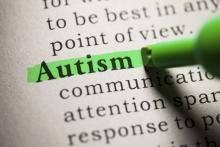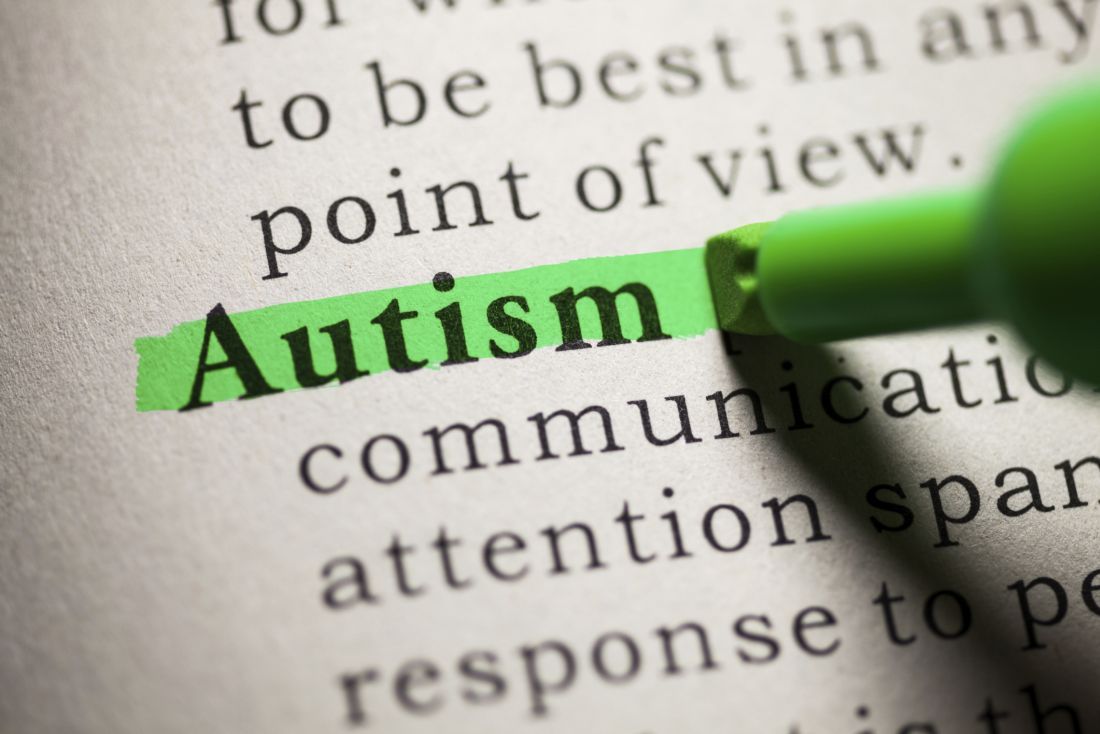User login
The prevalence of autism spectrum disorder (ASD) in U.S. children and adolescents climbed to 2.41% from 2014 to 2016, Guifeng Xu, MD, and her associates, wrote in a research letter. However, the increased prevalence of ASD over the 3-year period was not statistically significant.
Males were far more likely to be diagnosed with ASD than females, with respective prevalence rates of 3.54% and 1.22%, from 2014 to 2016.
using data from the Autism and Developmental Disabilities Monitoring Network. The ADDM reported a rate of 1.46%, compared with the NHIS rate of 2.41%. Differences in study design and participant characteristics are likely the cause of this difference; the ADDM is conducted at specific sites, while the NHIS is considered to be a nationally representative sample.
“Changes in nonetiologic factors (such as diagnostic criteria, public awareness, and referral), as well as in etiologic factors (including genetic and environmental risk factors), have been postulated to account for the previously observed increase in ASD prevalence,” concluded Dr. Xu, of the department of epidemiology at the University of Iowa, Iowa City, and her associates. “Continued monitoring of the prevalence and investigation of changes in risk factors are warranted.”
Find the full research letter in JAMA (2018;319[1]:81-2. doi: 10.1001/jama.2017.17812).
The prevalence of autism spectrum disorder (ASD) in U.S. children and adolescents climbed to 2.41% from 2014 to 2016, Guifeng Xu, MD, and her associates, wrote in a research letter. However, the increased prevalence of ASD over the 3-year period was not statistically significant.
Males were far more likely to be diagnosed with ASD than females, with respective prevalence rates of 3.54% and 1.22%, from 2014 to 2016.
using data from the Autism and Developmental Disabilities Monitoring Network. The ADDM reported a rate of 1.46%, compared with the NHIS rate of 2.41%. Differences in study design and participant characteristics are likely the cause of this difference; the ADDM is conducted at specific sites, while the NHIS is considered to be a nationally representative sample.
“Changes in nonetiologic factors (such as diagnostic criteria, public awareness, and referral), as well as in etiologic factors (including genetic and environmental risk factors), have been postulated to account for the previously observed increase in ASD prevalence,” concluded Dr. Xu, of the department of epidemiology at the University of Iowa, Iowa City, and her associates. “Continued monitoring of the prevalence and investigation of changes in risk factors are warranted.”
Find the full research letter in JAMA (2018;319[1]:81-2. doi: 10.1001/jama.2017.17812).
The prevalence of autism spectrum disorder (ASD) in U.S. children and adolescents climbed to 2.41% from 2014 to 2016, Guifeng Xu, MD, and her associates, wrote in a research letter. However, the increased prevalence of ASD over the 3-year period was not statistically significant.
Males were far more likely to be diagnosed with ASD than females, with respective prevalence rates of 3.54% and 1.22%, from 2014 to 2016.
using data from the Autism and Developmental Disabilities Monitoring Network. The ADDM reported a rate of 1.46%, compared with the NHIS rate of 2.41%. Differences in study design and participant characteristics are likely the cause of this difference; the ADDM is conducted at specific sites, while the NHIS is considered to be a nationally representative sample.
“Changes in nonetiologic factors (such as diagnostic criteria, public awareness, and referral), as well as in etiologic factors (including genetic and environmental risk factors), have been postulated to account for the previously observed increase in ASD prevalence,” concluded Dr. Xu, of the department of epidemiology at the University of Iowa, Iowa City, and her associates. “Continued monitoring of the prevalence and investigation of changes in risk factors are warranted.”
Find the full research letter in JAMA (2018;319[1]:81-2. doi: 10.1001/jama.2017.17812).
FROM JAMA

